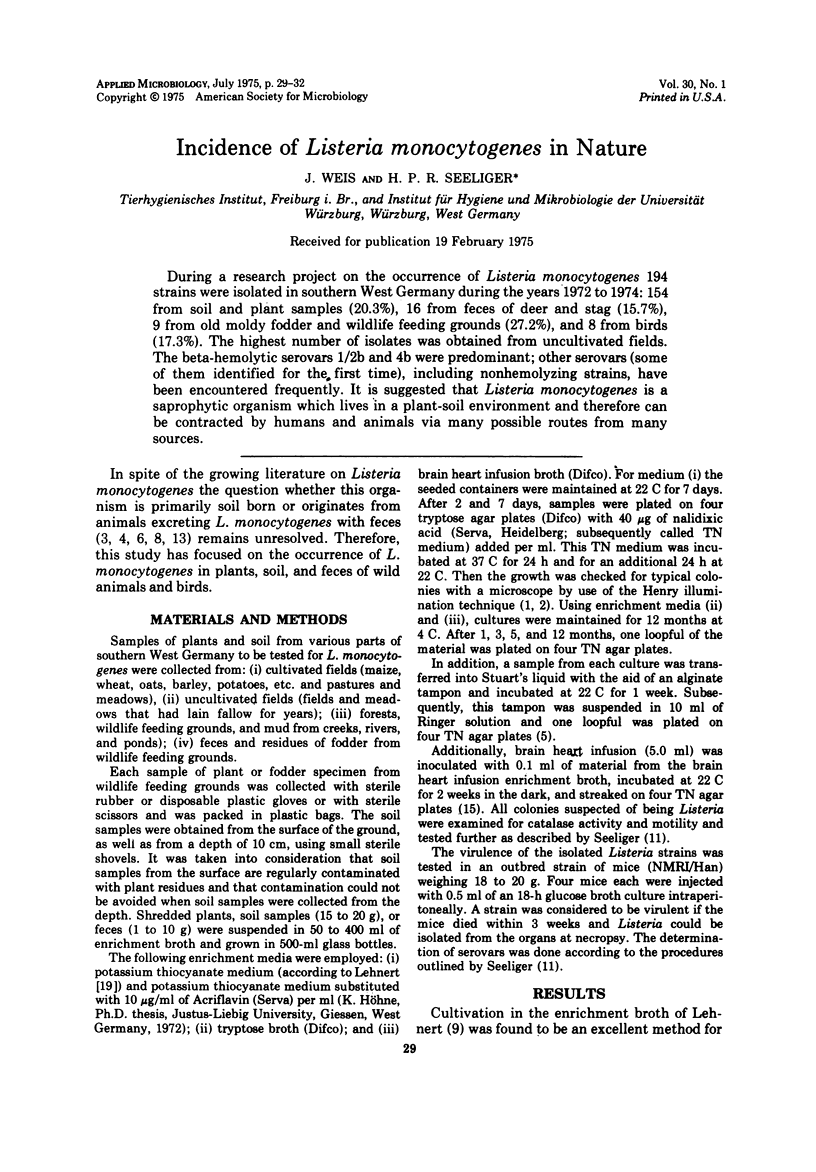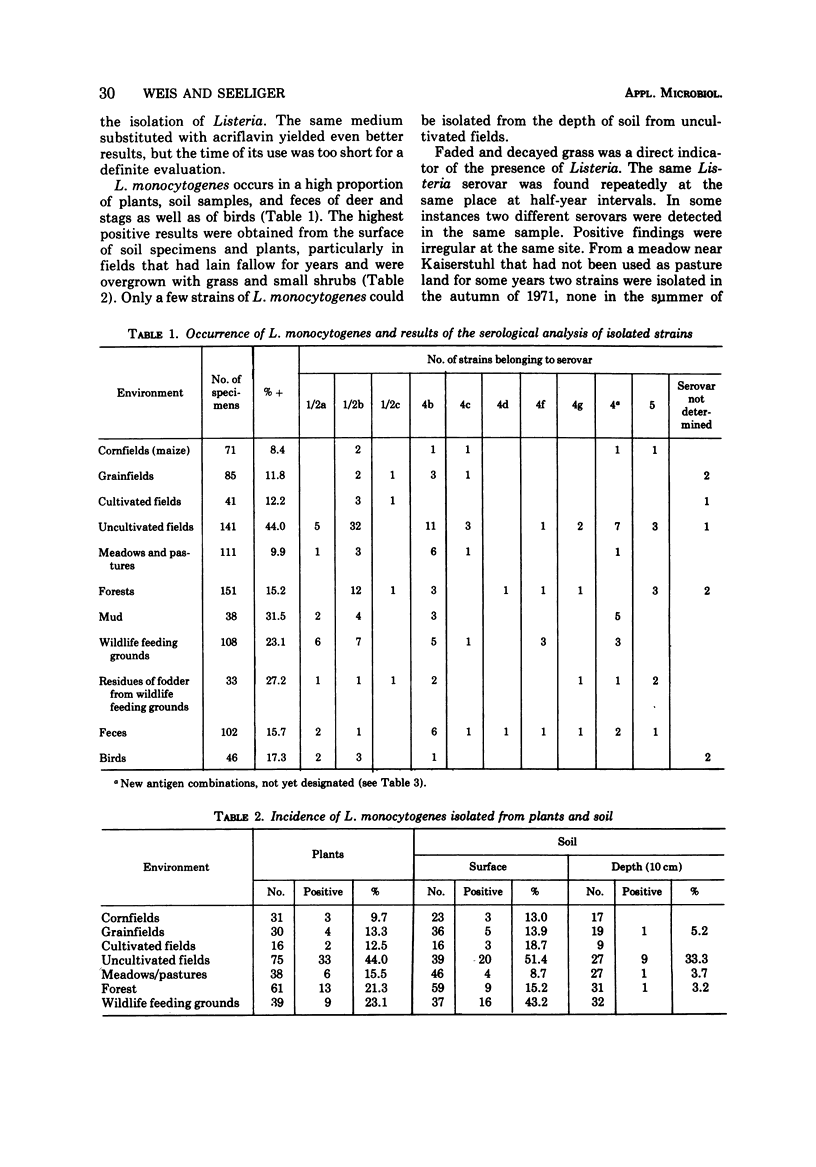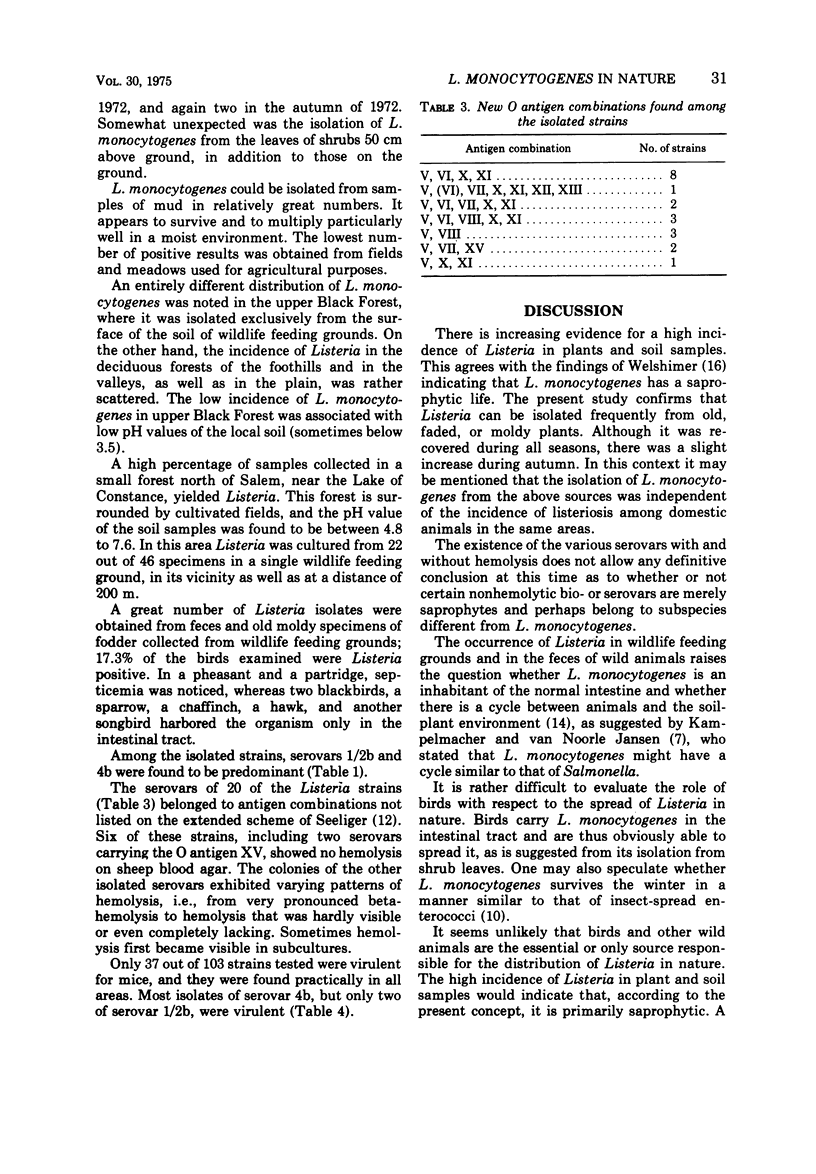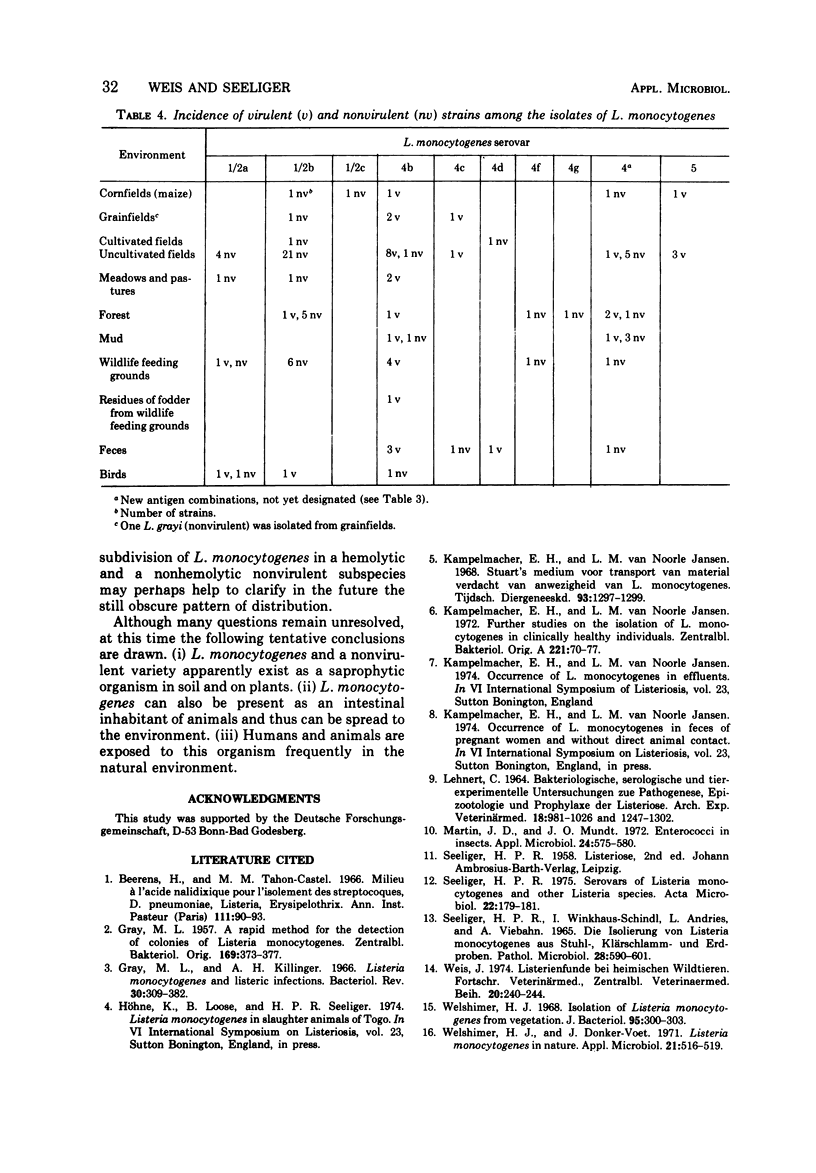Abstract
During a research project on the occurrence of Listeria monocytogenes 194 strains were isolated in southern West Germany during the years 1972 to 1974: 154 from soil and plant samples (20.3%), 16 from feces of deer and stag (15.7%), 9 from old moldy fodder and wildlife feeding grounds (27.2%), and 8 from birds (17.3%). The highest number of isolates was obtained from uncultivated fields. The beta-hemolytic serovars 1/2b and 4b were predominant; other serovars (some of them identified for the first time), including nonhemolyzing strains, have been encountered frequently. It is suggested that Listeria monocytogenes is a saprophytic organism which lives in a plant-soil environment and therefore can be contracted by humans and animals via many possible routes from many sources.
Full text
PDF



Selected References
These references are in PubMed. This may not be the complete list of references from this article.
- Beerens H., Tahon-Castel M. M. Milieu à l'acide nalidixique pour l'isolement des streptocoques, D. pneumoniae, listeria, erysipelothrix. Ann Inst Pasteur (Paris) 1966 Jul;111(1):90–93. [PubMed] [Google Scholar]
- GRAY M. L. A rapid method for the detection of colonies of Listeria monocytogenes. Zentralbl Bakteriol Orig. 1957 Sep;169(5-6):373–377. [PubMed] [Google Scholar]
- Gray M. L., Killinger A. H. Listeria monocytogenes and listeric infections. Bacteriol Rev. 1966 Jun;30(2):309–382. doi: 10.1128/br.30.2.309-382.1966. [DOI] [PMC free article] [PubMed] [Google Scholar]
- Kampelmacher E. H., van Noorle Jansen L. M. Uber die Isolierung von L. monocytogenes bei klinisch gesunden Personen. Zentralbl Bakteriol Orig A. 1972 Jul;221(1):70–77. [PubMed] [Google Scholar]
- Martin J. D., Mundt J. O. Enterococci in insects. Appl Microbiol. 1972 Oct;24(4):575–580. doi: 10.1128/am.24.4.575-580.1972. [DOI] [PMC free article] [PubMed] [Google Scholar]
- Seeliger H. P. Serovariants of Listeria monocytogenes and other Listeria species. Acta Microbiol Acad Sci Hung. 1975;22(2):179–181. [PubMed] [Google Scholar]
- Seeliger H. P., Winkhaus-Schindl I., Andries L., Viebahn A. Die Isolierung von Listeria monocytogenes aus Stuhl-, Klärschlamm- und Erdproben. Pathol Microbiol (Basel) 1965;28(4):590–601. [PubMed] [Google Scholar]
- Welshimer H. J., Donker-Voet J. Listeria monocytogenes in nature. Appl Microbiol. 1971 Mar;21(3):516–519. doi: 10.1128/am.21.3.516-519.1971. [DOI] [PMC free article] [PubMed] [Google Scholar]
- Welshimer H. J. Isolation of Listeria monocytogenes from vegetation. J Bacteriol. 1968 Feb;95(2):300–303. doi: 10.1128/jb.95.2.300-303.1968. [DOI] [PMC free article] [PubMed] [Google Scholar]


